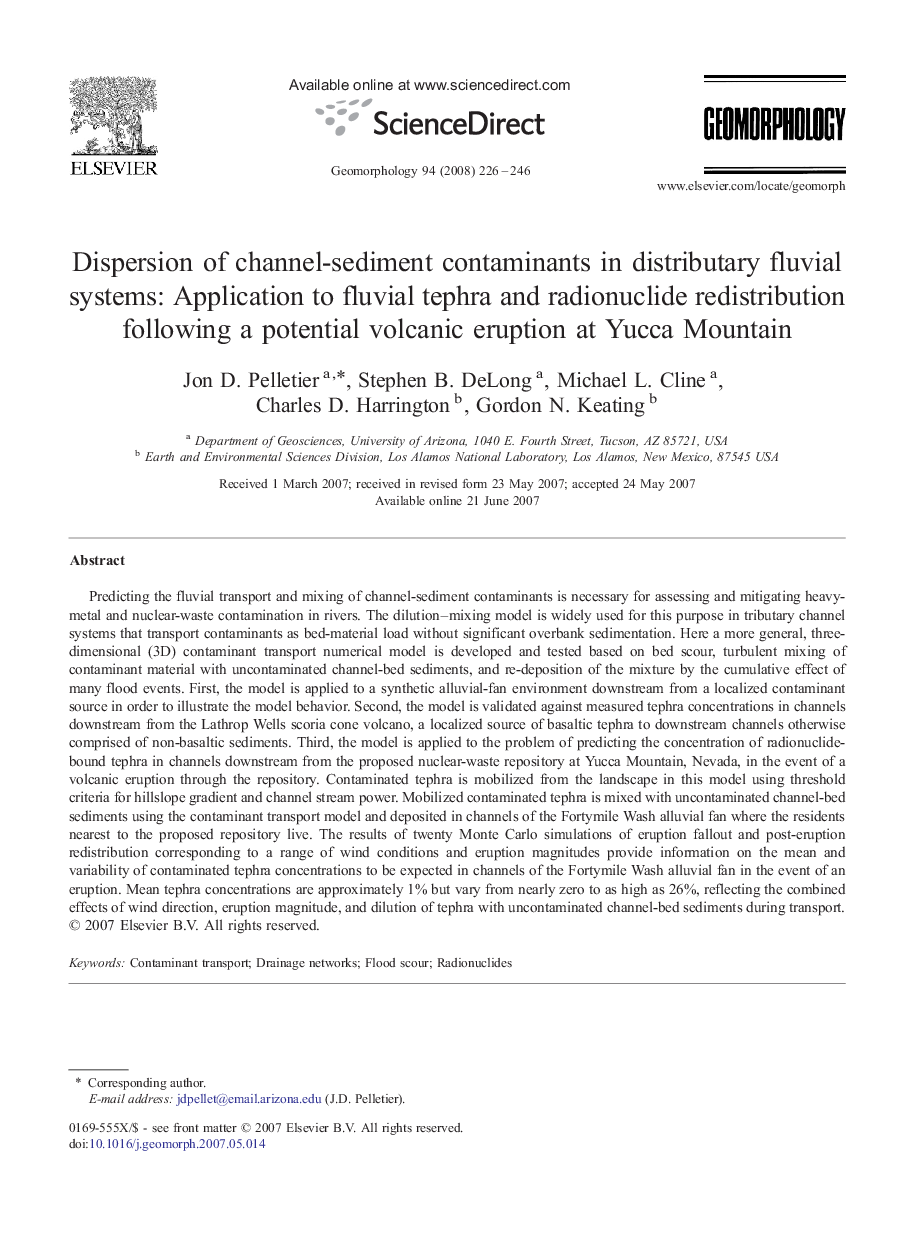| Article ID | Journal | Published Year | Pages | File Type |
|---|---|---|---|---|
| 4686959 | Geomorphology | 2008 | 21 Pages |
Abstract
Predicting the fluvial transport and mixing of channel-sediment contaminants is necessary for assessing and mitigating heavy-metal and nuclear-waste contamination in rivers. The dilution-mixing model is widely used for this purpose in tributary channel systems that transport contaminants as bed-material load without significant overbank sedimentation. Here a more general, three-dimensional (3D) contaminant transport numerical model is developed and tested based on bed scour, turbulent mixing of contaminant material with uncontaminated channel-bed sediments, and re-deposition of the mixture by the cumulative effect of many flood events. First, the model is applied to a synthetic alluvial-fan environment downstream from a localized contaminant source in order to illustrate the model behavior. Second, the model is validated against measured tephra concentrations in channels downstream from the Lathrop Wells scoria cone volcano, a localized source of basaltic tephra to downstream channels otherwise comprised of non-basaltic sediments. Third, the model is applied to the problem of predicting the concentration of radionuclide-bound tephra in channels downstream from the proposed nuclear-waste repository at Yucca Mountain, Nevada, in the event of a volcanic eruption through the repository. Contaminated tephra is mobilized from the landscape in this model using threshold criteria for hillslope gradient and channel stream power. Mobilized contaminated tephra is mixed with uncontaminated channel-bed sediments using the contaminant transport model and deposited in channels of the Fortymile Wash alluvial fan where the residents nearest to the proposed repository live. The results of twenty Monte Carlo simulations of eruption fallout and post-eruption redistribution corresponding to a range of wind conditions and eruption magnitudes provide information on the mean and variability of contaminated tephra concentrations to be expected in channels of the Fortymile Wash alluvial fan in the event of an eruption. Mean tephra concentrations are approximately 1% but vary from nearly zero to as high as 26%, reflecting the combined effects of wind direction, eruption magnitude, and dilution of tephra with uncontaminated channel-bed sediments during transport.
Related Topics
Physical Sciences and Engineering
Earth and Planetary Sciences
Earth-Surface Processes
Authors
Jon D. Pelletier, Stephen B. DeLong, Michael L. Cline, Charles D. Harrington, Gordon N. Keating,
